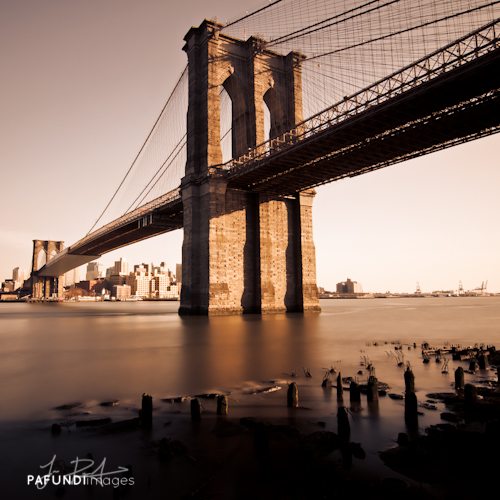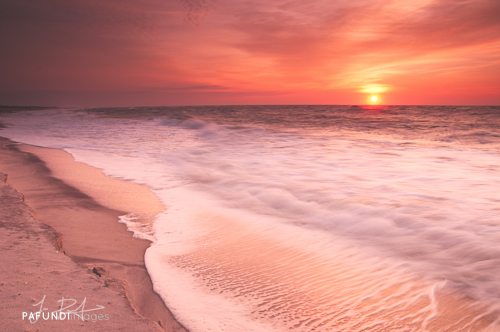As a landscape photographer, I love using lens filters. There are certain benefits you gain in effectively using filters that simply cannot be reproduced in Photoshop. Learning the ins and outs of proper filter use is an art form in and of itself and takes a lot of practice. What I would like to do today is introduce a few of my favorite lens filters, why I use them, and what they can specifically do for your landscape images. I will follow this post up in the future about the technical aspects of filter shooting so you can take this knowledge out to the field with you and create some beautiful images.
Circular Polarizer – A well know but seemingly under appreciated lens filter. Many people dismiss the usefulness of polarizers because of the amazing image editing tools available nowadays but there are a few reasons why I still like using one. Polarizers are most known for deepening blue skies and cutting out glare in water. Yes, skies can be further saturated during post processing, but CP’s also retain contrast in clouds and prevent them from being over exposed, hugely beneficial. Eliminating glare in water can often times be more aesthetically pleasing, but there is another use that can sometimes come in handy: dismissing reflections and glare in windows and glass.

My circular polarizer was worth it’s weight in gold during a helicopter flight I took over the island of Kaua’i. Reflections of passengers clothing and bright yellow safety packs created strong glare out of every window. With some quick turning of the filter, I was able to magically make the reflections disappear and come home with some crystal clear images.
Neutral Density – ND filters are simply dark glass that fit over your camera lens in order to allow longer shutter speeds. Why would you want to do such a thing? Many times giving your images a sense of motion can add drama and intrigue to a landscape photograph. The most common uses of ND filters are showing motion in water or passing clouds. ND filters are produced in varying degrees of darkness which yield longer exposure times and more dramatic results.

With longer shutter speeds come more interesting water. Armed with a 10 stop ND filter, I was able to shoot a 30 second exposure during the day which created smooth and glassy like water under the Brooklyn Bridge.
Graduated Neutral Density – Just as the name suggests, graduated ND filters are like the aforementioned neutral density filters, but with a, you guessed it, graduated darkness. Rather than the entire filter being a 3 stop, 6 stop, or 10 stop, half or a third of the filter is perfectly clear glass. The remainder of the filter either transitions softly to the designated stop or just begins as a hard change in density. The reason you may want to go the graduated ND route, is to expose part of the scene (sky) correctly while still retaining a properly exposed foreground.

Sunrise and sunsets are my favorite time to use a graduated ND filter. Without over exposing the sky with a slower shutter speed I was able to extract subtle movements in the crashing waves which added a nice element to this image.
As I mentioned in the opening paragraph, I will delve much deeper into lens filters in the future, but it’s important to gain a fundamental understanding of the varying types of filters out there. With that said, there are other filters out there in addition to the ones mentioned in this article, but these three seem to be the most useful for shooting landscapes.
–
![]()
 Jesse Pafundi is a photographer hailing from Long Island, New York. A lover of all things photography, he enjoys traveling and capturing the world around him as much as possible. In addition to shooting landscapes, he has a major affection for New York City architecture and urban exploration. Whether it’s HDR, lens filters, or iPhoneography, he enjoys dabbling in and learning as many techniques as he can consume. Jesse believes strongly in the use of social media and blogging as a tool to further his knowledge and share his passion with anyone who wants to listen.
Jesse Pafundi is a photographer hailing from Long Island, New York. A lover of all things photography, he enjoys traveling and capturing the world around him as much as possible. In addition to shooting landscapes, he has a major affection for New York City architecture and urban exploration. Whether it’s HDR, lens filters, or iPhoneography, he enjoys dabbling in and learning as many techniques as he can consume. Jesse believes strongly in the use of social media and blogging as a tool to further his knowledge and share his passion with anyone who wants to listen.
![]()
Company: Pafundi Images
Website: http://dudewithcamera.com
Twitter: @dude_withcamera
Facebook: http://facebook.com/pafundiimages
Photo Credit: © 2011 Jesse Pafundi
Here’s how you can share your tips, techniques and tutorials on CurrentPhotographer.com
–
*The Current Photographer website contains links to our affiliate partners. Purchasing products and services through these links helps support our efforts to bring you the quality information you love and there’s no additional cost to you.
I know these well. 🙂
Nice article, Jesse. Solid images as well.